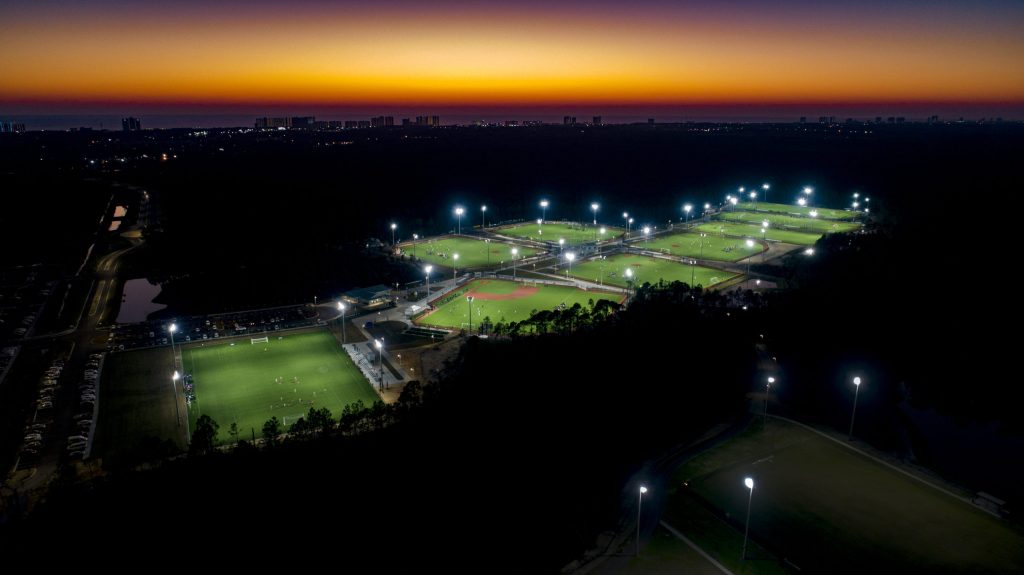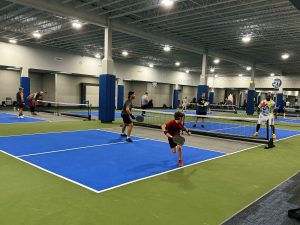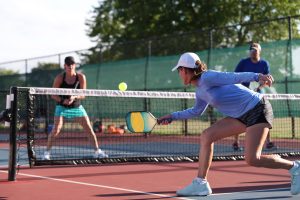In today’s rapidly evolving society, the importance of promoting health, wellness, and community engagement continues to rise. This has led to a surge in the popularity of youth sports complexes—a trend that is reshaping communities across the globe. An outdoor sports complex serves as a hub for various sports such as track and field, football, baseball, soccer, lacrosse, swimming, and more. These complexes not only provide a space for physical activity but also become a focal point for community interaction and economic development.
Ready to make an impact in your community?
The Importance and Benefits of Outdoor Sports Complexes
Outdoor sports complexes offer several benefits outside of physical health. They provide a controlled environment that the community’s sports teams can use for consistent practice and competition, which is essential for developing athletes’ skills and physical fitness. Moreover, these complexes act as communal hubs, bringing together individuals from diverse backgrounds to share in the joy of sports, recreation, and more with events and other activities being hosted there as well. The economic impact cannot be overlooked either; these facilities generate significant revenue through hosting events and tournaments that attract more visitors to the area.
Understanding the Outdoor Sports Complex Costs: A Closer Look at Different Types of Fields
When planning an outdoor sports complex, one must consider the various types of fields required to accommodate different sports. Among the most popular offerings are baseball/softball diamonds and multi-purpose long fields that are used for soccer, football, and lacrosse. The following cost estimates for those two types of fields come from The Sports Facilities Companies’ Pre-Development team which has over 20 years of experience in planning and developing some of the best sports facilities in the country. The estimated costs per field include the hard costs of support structures and site development, field and sporting equipment costs, furniture, fixtures, and equipment costs (FF&E), soft costs for construction, and escalation costs. The only costs not included in these estimates would be the land costs, soft costs of operations, and working capital reserve for unforeseen costs. The choice between turf and natural surfaces plays a crucial role in determining both the cost and functionality of these fields. More information about the differences between turf and natural grass can be found in the next section of this article.
- Turf Baseball/Softball Diamonds: For a 400′ baseball/softball diamond with artificial turf, the price range would be somewhere between $3.4 million to $4.6 million per field. This investment offers the advantage of lower maintenance costs and higher durability compared to natural grass.
- Natural Grass Baseball/Softball Diamonds: On the other hand, opting for a natural grass surface can reduce the initial cost to between $2.5 million and $3.4 million per field, offering a more traditional playing experience but requiring more intensive maintenance.
- Turf Multi-Purpose Fields: When it comes to fields designed for soccer, football, and lacrosse, the choice of surface again significantly affects the budget. Turf fields in this category can cost between $2.6 million and $3.6 million, providing a resilient and versatile playing surface suitable for various sports and weather conditions.
- Natural Grass Multi-Purpose Fields: Conversely, natural grass fields are more cost-effective, with expenses ranging from $1.8 million to $2.5 million. While natural grass offers an authentic playing experience, it demands rigorous upkeep and is more susceptible to weather-related disruptions.
Pros and Cons of Turf vs. Natural Surfaces
The decision between turf and natural surfaces hinges on several factors, including budget, maintenance capabilities, and intended use. Artificial turf boasts high durability and minimal maintenance, making it an ideal choice for complexes expecting heavy usage and seeking to minimize long-term upkeep costs. However, the higher upfront cost can be a deterrent for some projects. Natural grass, while offering a traditional aesthetic and playing experience, requires significant ongoing maintenance, including watering, mowing, and periodic renovations, which can add up in terms of both time and money.
According to Dan Morton, the vice president of SFC’s Pre-Development Services, turf is about 60-80 percent less expensive to maintain than natural grass. Over a 10-year snapshot, the development cost and ongoing maintenance for turf and grass will be close to even – then you will have to replace the turf, so the cost is close to even over a ten-year period. The benefit that turf provides is you get three times more utilization of the fields because you don’t have to rest fields between use, prep/maintain fields between use, and you can play in inclement weather/year-round. So, if you can afford the higher initial cost associated with turf fields, it may be in your best interest to go that route so that you can get more use out of each of your fields for around the same cost as a natural grass field, over a ten-year period.
Navigating the Path to a Successful Sports Complex
The construction of an outdoor sports complex is a substantial investment in the health and vitality of communities. While the costs associated with building such a facility are significant, the benefits—ranging from enhanced community engagement to economic development—justify the investment. By carefully considering the type of fields, surfaces, and additional infrastructure required, project planners can make informed decisions that balance budgetary constraints with the long-term goals of the complex.
For those contemplating the development of an outdoor sports complex, it is crucial to engage with industry professionals who have the expertise and experience necessary to guide the project to fruition. With a focus on data-driven insights and a deep understanding of the economic and community impact of these facilities, The Sports Facilities Companies stands ready to assist in turning your vision into reality. Together, we can create spaces that inspire physical activity, foster community spirit, and leave a lasting legacy of wellness and unity. If you are interested in bringing a project to life but need help or guidance along the way, contact us or give us a call at (727) 474-3845.






